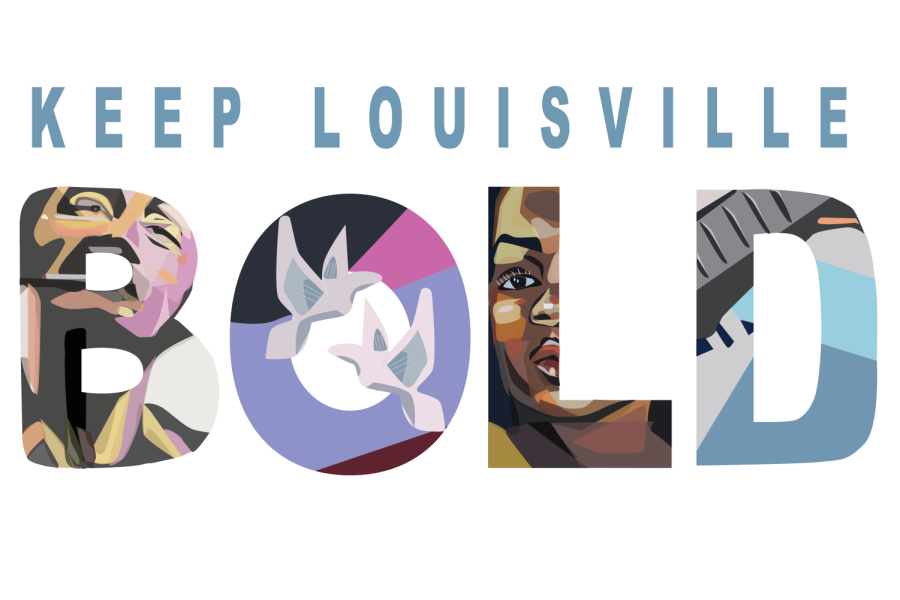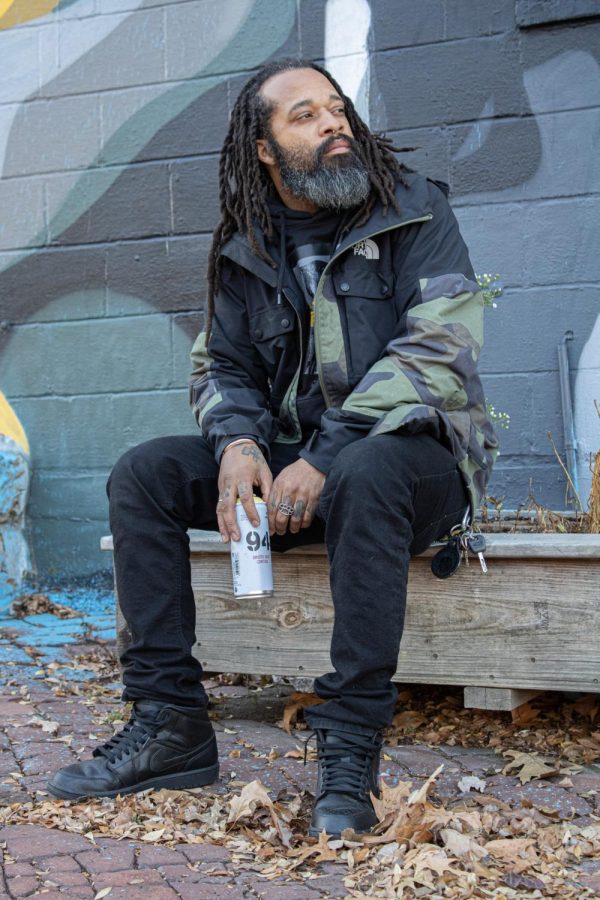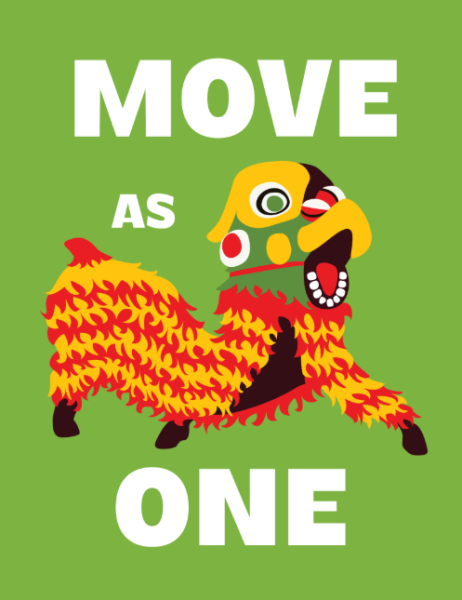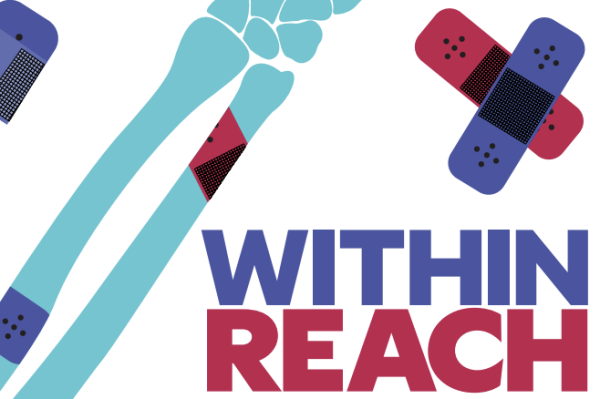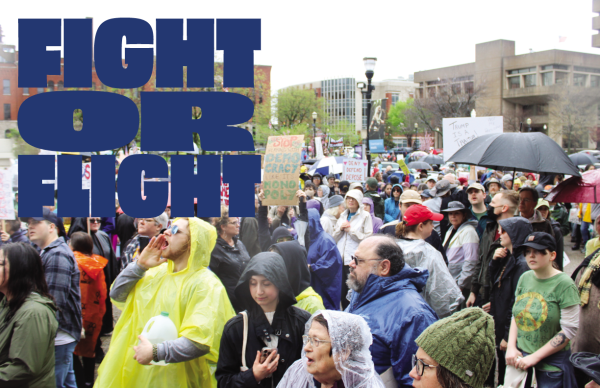Keep Louisville BOLD
How these local artists are changing Louisville, one wall at a time. Writing by Jackson Barnes | Design by Claire Dixon | Photos by Bella Tilford
First impressions are important, especially in cities. With high-speed internet and the affordability of long distance transport, so many more entertainment options are available to people. Why actually go somewhere when everything is just a click away on your phone? We have to ask: what makes our city stand out? Why should people come here, of all places? Ideally, we wouldn’t judge a book by its cover, but not everyone can, or is willing to, take the time to look deeper. Now more than ever, what someone initially sees holds a lot of weight. In Louisville, an already colorful city, one art form perfectly displays a first impression: murals.
Murals have a multitude of benefits, one being their ability to bring color to communities in a way that other art rarely can. This man-made beautification gives them depth at a glance, allowing for even a casual passerby to become interested.
An alleyway containing a mural becomes so much more than just a rugged road and a wall. It becomes an attraction, a landmark. Not only do murals boost foot traffic to more obscure areas, they also lead to a huge increase in positive energy throughout the city.
During the Black Lives Matter movement, in the wake of Breonna Taylor’s death, renowned Louisville muralist, Braylyn “Resko” Stewart, worked tirelessly alongside artists Whitney Holbourn and Andrew Norris to create the “Say Their Names” mural in downtown Louisville. Located at the intersection of 11th and Main, the piece acted as a sort of gathering point for supporters of the movement, and a target for its detractors.
“I mean, it was great, but it was tense at the same time because it was during the whole, you know, protests and everything,” Stewart said. “Some people would come by and yell at us, and some people would come by and give us accolades and tell us that we’re doing a great job, so we’re getting more ‘thank yous’ and ‘it’s beautiful’ and people sitting out here and enjoying it, than people who didn’t want it here.”
In June of last year, two members of the white supremacist group, Patriot Front, vandalized the mural, spraying blue paint over the faces. Stewart and his fellow artists were quick to respond, crowdfunding an effort to repair the damage. They banded together, and were able to not only remove the defacement, but added another important figure’s face to it: Travis Nagdy, a protest leader of the Black Lives Matter movement, who was shot and killed in November of 2020.
Through Stewart’s work and collaboration with other artists, Nagdy’s life and impact on the movement is highlighted, bringing him to the attention of those that may not have ever known about him otherwise. A mural of a lesser known subject can bring new attention to parts of Louisville’s past or present. This effect is especially important, as it requires no prior knowledge or experience. The pure accessibility that murals offer is amazing in its own right.
“Anybody can walk by and have their own opinion about it, but everybody’s going to be emotionally affected by it,” Stewart said.
Additionally, murals provide a platform for artists to leave their mark on Louisville and contribute to the local aesthetic. Creating this art is a community-building activity at its core, so a visual representation of said community really reinforces that. Though murals are sometimes funded by the Louisville municipality or commissioned privately, the creative intent and personality of the artist shines through, meaning every mural has a personal touch. The art style, colors, and location all come together to create a unique piece that’s hard to replicate.
A shining example of this is the Woody Guthrie mural by artist Damon Thompson. Thompson has done work all over Louisville, with public interest in his murals taking off over quarantine. As someone who was very involved in the art scene, even before the pandemic, Thompson’s house played host to a monthly event as a part of a gallery hop throughout Louisville. While he already had a background in more traditional art, his first foray into graffiti and wall art was inspired by his colleagues who would attend these events.
“I’d started doing that with friends and realized just how much more accomplished they were at the craft of the spray can than I was, compared to how good I was at old painting and acrylic and stuff,” Thompson said. “It made me want to get better.”
His mural is located on the side of the Pearl of Germantown, which is a bar named after its eponymous neighborhood. Both its scale and style are eye-catching, making it immediately visible from the street. It’s done in spray paint, which is Thompson’s usual tool of choice for his murals. The way he sees it, the spray can itself has made this type of art much more accessible.
“The spray can is to murals what the sewing machine was to tailors,” he said.
Because the cans work without primer and don’t need a specific surface to paint on, it reduces the preparations required for a piece’s creation. All you need, essentially, is blank space to work upon.
Thompson’s mural makes the most of the space; Guthrie’s figure fills a large portion of the wall, his iconic guitar appearing near the bottom. The message “this machine kills fascists,” is emblazoned across it.
Even at the most basic level, murals leave a lasting impression. Whether it be through memory or simple observation, these large scale artworks are intrinsically tied to where they’re located. You’re more likely to remember a place if there’s a sense of spectacle with it, or if there’s something special about it. How often do you remember a building or a wall, just on its own? You probably walk by hundreds regularly, without them ever really catching your eye. Inversely, how many pieces of art can you name, or imagine in your mind? In this way, murals turn their settings into canvases, and turn cities into galleries. In Louisville, their abundance works to highlight all the different things that make this city so unique.
Donations are collected through The Publishers, duPont Manual High School's booster club for J&C. On The Record relies completely on sponsorships, advertisements, and donations to produce and distribute each issue. Please consider donating to our cause, and helping the student journalists of OTR amplify youth voices for years to come.
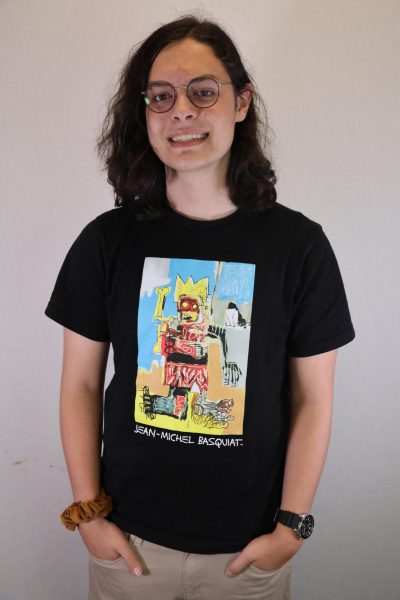
Jackson Barnes is a senior Multimedia Assignment Editor for On the Record. He loves music, both listening to and creating it. He has a passion for photography,...
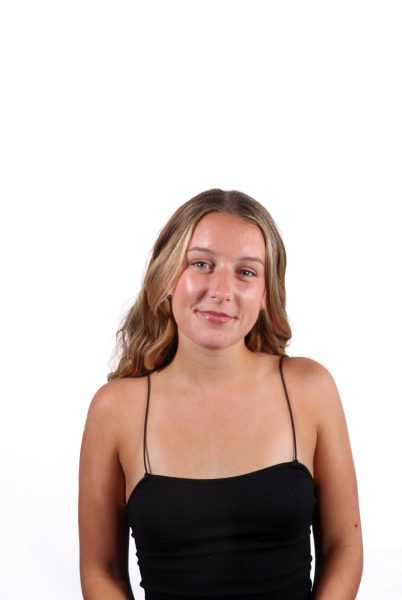
Claire Dixon, this year's senior Design Director, has been an integral part of On The Record for three years. She especially cherishes the opportunity...


